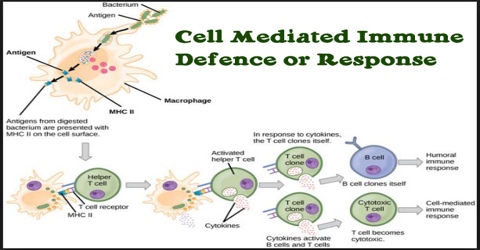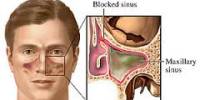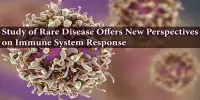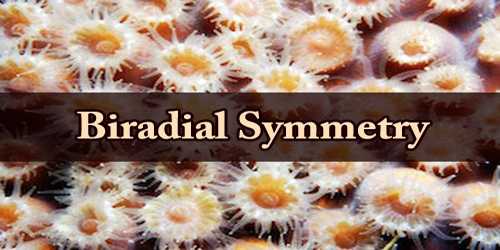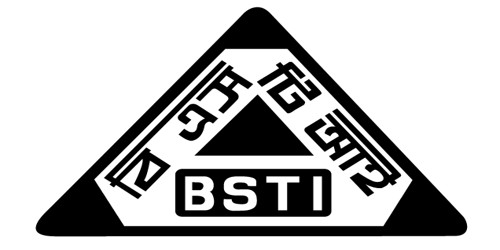Cell Mediated Immune Defence or Response
The immune system distinguishes two groups of foreign substances. One group consists of antigens that are freely circulating in the body. These include molecules, viruses, and foreign cells. A second group consists of self cells that display aberrant MHC proteins. Aberrant MHC proteins can originate from antigens that have been engulfed and broken down (exogenous antigens) or from virus‐infected and tumor cells that are actively synthesizing foreign proteins (endogenous antigens).
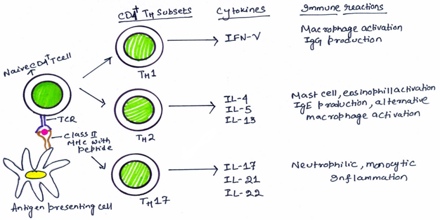
Cell-mediated immunity is an immune response that does not involve antibodies, but rather involves the activation of phagocytes, antigen-specific cytotoxic T-lymphocytes, and the release of various cytokines in response to an antigen.
The principal role of cell-mediated immunity is to detect and eliminate cells that harbour intracellular pathogens. The antigen-specific cells contribute to the cell-mediated immunity include CD8+ cytotoxic T lymphocytes (CTLs), and cytokine secreting CD4+ TH (T helper cells)cells that mediate delayed type hypersensitivity. Effector T cells generated in response to antigen are responsible for cell-mediated immunity. Both activated T helper cells and cytotoxic T lymphocytes (CTLs) play effector cells in cell-mediated immune reactions. Cytokines secreted by T helper cells can activate phagocytic cells and enabling them to phagocytose and kill microorganisms more effectively. The antigen-nonspcific cells that contribute to the cell-mediated immunity include NK cells, macrophages, neutrophills and eosinophils. T cells, NK cells and macrophages are the most important sources of the cytokines that organize and support cell-mediated immunity. Cell-mediated immunity can recognize and eliminate tumour cells that have undergone genetic modifications so that they express antigens not typical of normal cells. Though humoral and cell-mediated immunity have many distinctive features, they are not completely independent. Macrophages, NK cells, neutrophils and eosinophils can use antibodies as receptors for killing target cells. Activation of complement system by antigen-antibody complexes gives rise to chemotactic peptides which help in assembling the cell types required for a cell-mediated response.
The Specificity of Cell-Mediated Immune Response
The main goal of the research conducted by Peter Doherty and Rolf Zinkernagel was to study how the immune system, particularly T-cells which are involved in cellular immune response, could protect mice from a virus that causes LCM or Lymphocytic Choriomeningitis. Doherty and Zinkernagel injected LCM-immune T-cells into immunosuppressed, virus-infected recipients. The T-cells home equally well to lymphoid tissue of mice from the same strain and mice from another strain. Surprisingly, they found that the T-cells continue to multiply only in the mice from the same strain. This means that replication is not triggered by the virus, but is dependent on the thymus-derived lymphocytes exposed to histocompatible, virus-infected target cells.
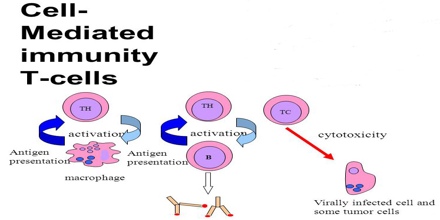
Succeeding researches conducted by other scientists showed that if a cell is infected by a virus, a small part of that virus is displayed bound to the cell’s histocompatibility antigen on the cell’s surface. The complex formed by the virus and histocompatibility antigen serves as the signal for the T-cell receptors to recognize the virus-infected cells.
The cell‐mediated response involves mostly T cells and responds to any cell that displays aberrant MHC markers, including cells invaded by pathogens, tumor cells, or transplanted cells. The following chain of events describes this immune response:
- Self cells or APCs displaying foreign antigens bind to T cells.
- Interleukins (secreted by APCs or helper T cells) costimulate activation of T cells.
- If MHC‐I and endogenous antigens are displayed on the plasma membrane, T cells proliferate, producing cytotoxic T cells. Cytotoxic T cells destroy cells displaying the antigens.
- If MHC‐II and exogenous antigens are displayed on the plasma membrane, T cells proliferate, producing helper T cells. Helper T cells release interleukins (and other cytokines), which stimulate B cells to produce antibodies that bind to the antigens and stimulate nonspecific agents (NK and macrophages) to destroy the antigens.
Antibody-Depended Cell-Mediated Cytotoxicity (ADCC)
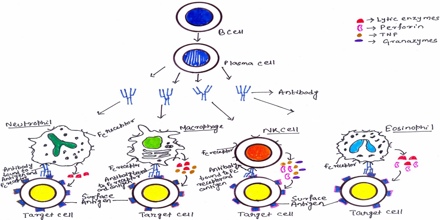
Antibody-Dependent Cell-Mediated Cytotoxicity (ADCC) is a mechanism of cell-mediated immune defense whereby an effector cell of the immune system actively lyses a target cell that has been bound by specific antibodies. A number of cells have cytotoxic potential and express membrane receptors for the Fc region of the antibody molecule. When antibody is specifically bound to the surface of a pathogen infected target cell, then the receptor bearing cells can bind to the antibody Fc region and thus indirectly to the target cell and cause the lysis of the target cell. ADCC is mediated by NK cells, macrophages, monocytes, neutrophils and eosinophils. NK cells express a membrane molecule, CD16 which has a Fc receptor for the antibody IgG. When the Fc receptor binds to the Fc region of the antibody IgG, the natural killer cell releases cytokines such as IFN-γ, tumor necrosis factor (TNF), and cytotoxic granules containing perforin and granazymes that enter the target cell and and promote cell death by apoptosis. When macrophages, neutrophils or eosinophils bind to a target cell, by the Fc receptor, they become more active metabolically and as a result of which the lytic enzymes at the site of the Fc mediated contact may result in damage to the target cell.
